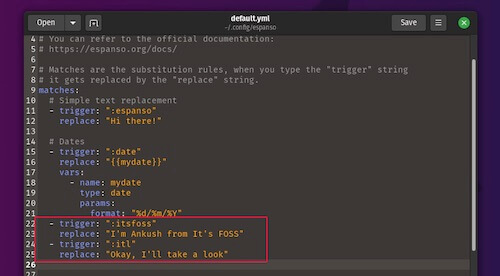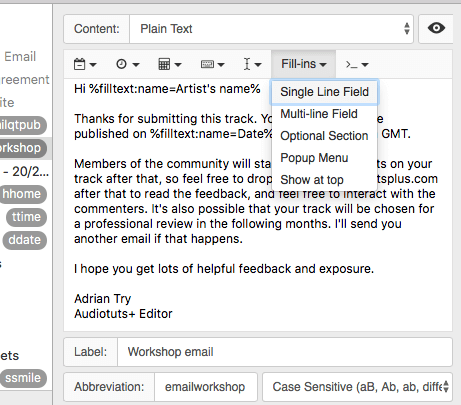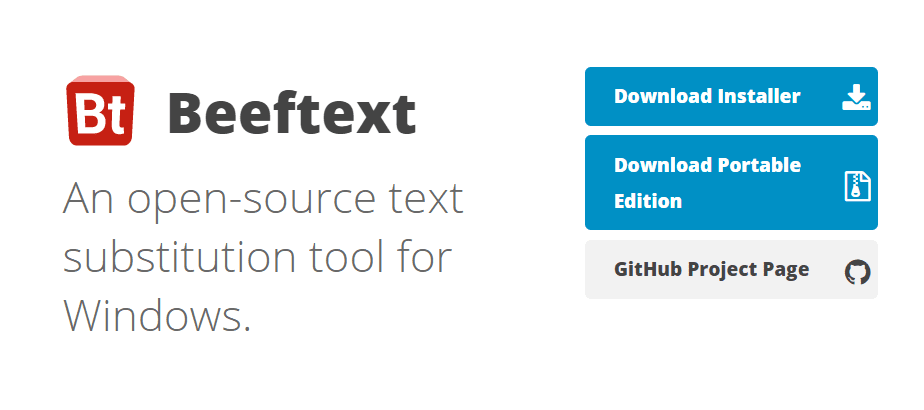

While grammatically it is correct to write it with upper case (if it is a real acronym), in emails sometimes it looks like if I would constantly screaming the word. Similarly I use acronyms of our projects sometimes in upper and sometimes in lower case. in less formal emails, I write them also as "soft robotics"and "morphological computation." For example, in my work I use terms like "Soft Robotics", "Morphological Computation", etc.

You could also use a prefix "p" for private or "my".ĭepending on the context I have to (or I want to) use names starting in upper case. ""įor any snippet referring to my personal data like address (private, work), telephone numbers, Skype name, etc.Here are some example how this could look like: The underlying idea is that I define different labels for different projects and catgories. I have written about in more details in my blog post "My top TextExpander snippets for emails". People do really appreciate that and using consitantly good subject lines, will let you stick out from the crowd. Use "[" for email subject labelsĪ good subject line in an email so important for good communication. This will move the cursor into the brackets right after "for" and before the closing bracket. For the snippet I use the cursor position trick, i.e., (waiting for %|). For examle, "whel" expands to but "(whel" I define to expand to (This comes in really handy when writing emails.

I use the prefix "l" for Markdown links.Ī lot of times I duplicate snippets, add a "(" in front of the snippet and and let the exapned text be in brackets. I use a similar approach for my links in my blog posts, which are written in Markdown. By the way, you can make also a nice snippet for an introduction and information email for new students that includes all the necessary links. You can also use it to define snippets for essential links for new students, e.g., where they can find forms or more information they need.
#TEXTEXPANDER ALTERNATIVE CODE#
one that we organizing), project homepages, links to download code we share, links to download PDFs of our papers, etc. This could be my own homepage, a link to our research group homepage, one for a conference or workshop (e.g. I define a lot of times shortcuts for links to webpages. "ddate" will expand to the current date in the format "February 15, 2015".

Some people use "x" or "y" to start snippets, which is another clever way. Other people use "." or " " as a prefix, but this can be an issue if you use TextExpander on your iOS devices, since you would have to switch your keyboard to numbers/symbols to get to the period and semicolon, which is an extra step and defies the whole idea of being faster. Since, most of the words don't start with two of the same letters (beside maybe "aardvark" or Spanish words like "llamar") you can avoid to trigger a snippet without wanting it. The most general rule for me is to double the first letter to make a snippet. Doubling the first letter to avoid confusion However, I also hope that this blog post inspires you to come up with your own "rules," which fit even better to your workflow. It is easier to remember a couple of general rules than every single snippet. The idea is, if I can't remember a snippet, I type it the way I would define it (i.e., according to my rules). Here are a couple of rules that I use to have a consistent way to define snippets. You have been warned :-)Ī "drawback" of this is that you will end up with tons of snippets, which makes it hard to remember them all. You will get all kinds of ideas and, after a while, you will not be able to live without it anymore. However, when you start making your first snippets and you have experienced the magic of it, you will be hooked. TextExpander is also one of these applications that at the beginning you think you will not have a lot of use for. Every time I have to work on another computer that does not have my snippets on it, it almost feels impossible for me to get anything done. TextExpander is one of my favorite applications.


 0 kommentar(er)
0 kommentar(er)
